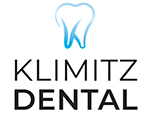Implants
Implants are becoming the new standard of care for replacing missing teeth.
What is it?
Dental implants are made from titanium and are designed such that the surrounding bone will integrate into the implant and the implant will not be rejected like other foreign bodies. Implants can be used to replace a single tooth, be used to support a bridge or to support a removable denture. A dental implant is a small screw which is placed into the jaw where a natural tooth has been lost. The implant component replaces the tooth root.
In order to be a good candidate for an implant, the following criteria must be met:
Good general health.
- An appropriate amount of bone in the implant site.
- Good oral hygiene to reduce complications.
The following conditions can negatively impact the success of implants including:
Diabetes.
Bone disorders.
- Smoking.
- Alcohol use.
What does it involve?
The procedure for implants is as follows:
A. First appointment – Consultation with the dentist in which radiographs (x-rays) are taken. In this appointment it is determined whether the site is a good candidate for implant placement. Dental models are usually made to aid in deciding the ideal position and type of implant to be used.
B. Second appointment – Implant placement. This step involves placing the implant into the jaw bone. This surgery is usually completed under local anesthetic. When the implant is placed its position is at the level of the gum and cannot be seen. Following the implant placement a healing period of up to 6 months is required before proceeding to the next step. In some cases a bone graft may be required which may require additional time for healing.
C. Third appointment – A titanium abutment is screwed into the implant. At this stage another impression may be taken to allow placement of the final restoration. At this point special care and cleaning instructions will be provided to the patient.
** The above procedure is done by a specialist who is either an oral surgeon or a periodontist. and the patient returns to our care for the final restoration.
D. Once the final impression has been taken, the lab will provide the finished restoration, which will be adhered to the implant.
Risks
There are very few risks associated with implants. For the most part, complications are rare and correctable. It is important to realize that implants require oral surgery, and with any oral surgery procedure there is risk of infection, damage to nerves, or perforation of the sinus cavity. That is why not all patients are suitable candidates for implant placement.
What happens after?
Regular maintenance visits to the dentist are recommended every 3-6 months as advised by your oral health care provider along with meticulous oral hygiene.
